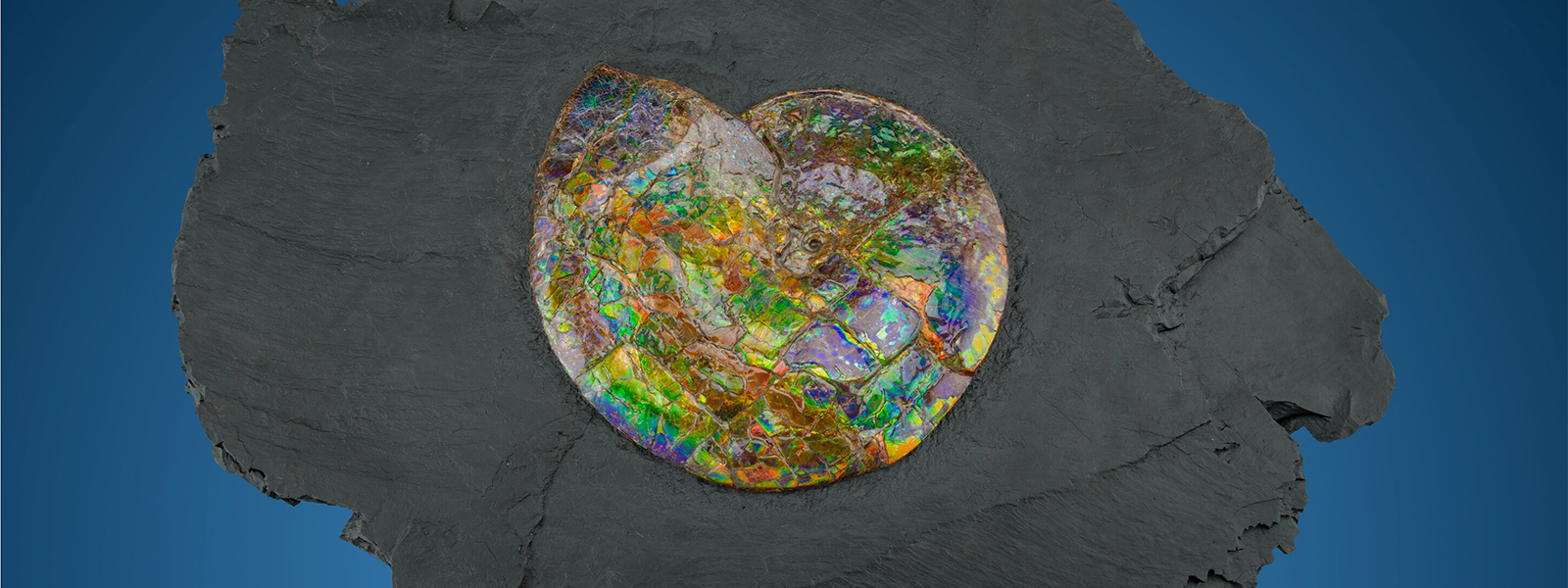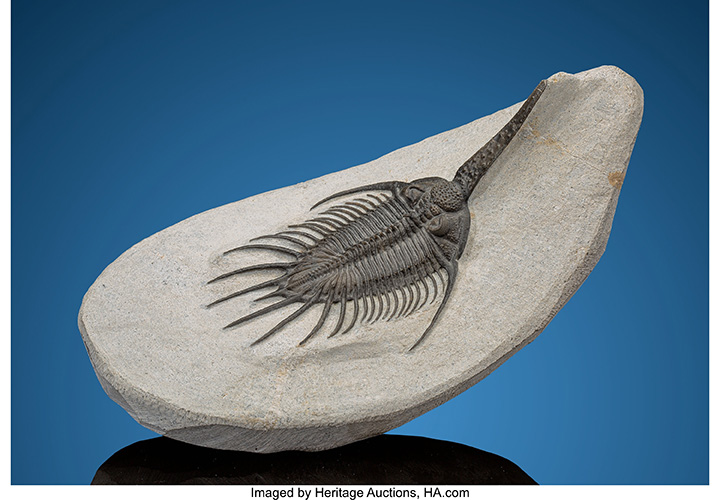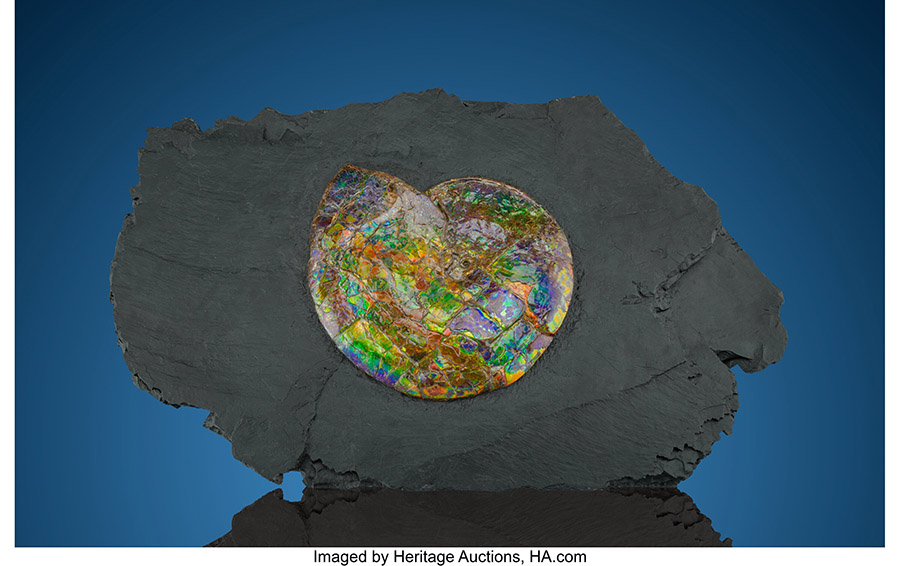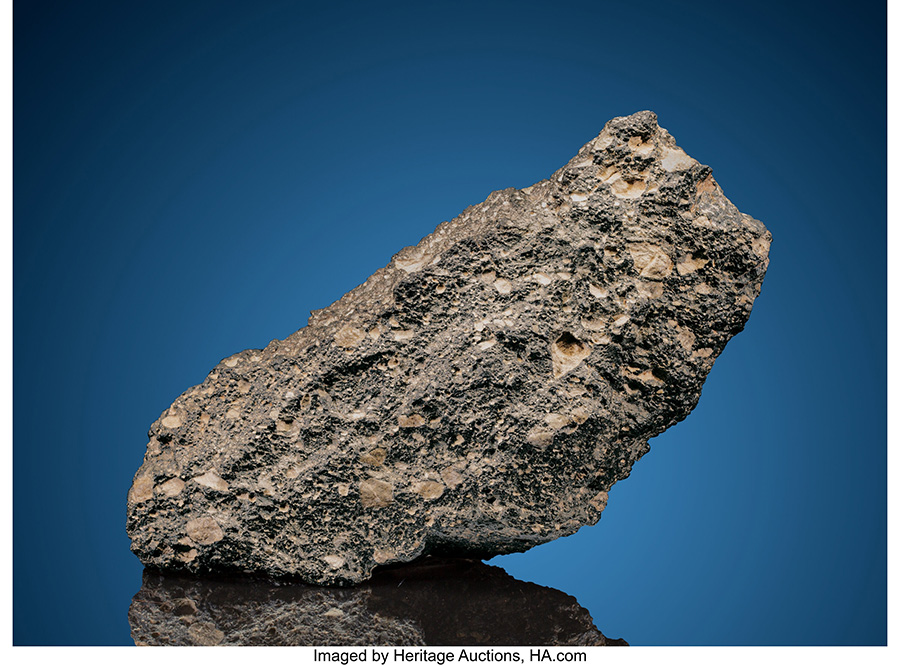NOVEMBER SALE OFFERS EVERYTHING FROM FOSSILS AND METEORITES TO RELICS FROM GROUNDBREAKING SCIENTIFIC ACHIEVEMENTS
By Craig C. Kissick
NATURE & SCIENCE SIGNATURE® AUCTION 8096
Nov. 4, 2022
Online: HA.com/8096
INQUIRIES
Craig C. Kissick
214.409.1995
CraigK@HA.com
In addition to fossils, meteorites and other categories of natural history, Heritage Auctions’ Nature & Science department includes scientific items with historical importance. These subsets can be all the more fascinating when viewed in the context of time and, in some cases, space – literally. Given our human experience, relatively short periods of time – often only decades or centuries – can add substantial intrigue and value to common materials like papers, books and artifacts. For example, Heritage’s November 4 Nature & Science Signature® Auction features several items related to the Enola Gay dropping the atomic bomb and ending World War II. While a few of the pieces are relatively contemporary, later penned by members of the infamous flight crew, that event dating back less than 80 years changed human history and, thus, perception of our own reality and mortality. While antiques are certainly not comparatively old in the sense of geologic time, simple photographs and autographs from prior generations can be meaningful and valuable.
A first day of issue stamp, a sketch of an air escape plan and a picture signed by a man who walked on the moon are quite contemporary when compared to the age of fossils yet “ancient” enough for us to see their appeal and worth. Discoveries challenge our minds and drive our civilization, and such watershed moments as Drs. Watson and Crick identifying the double-helix form of DNA, Dr. Denton Cooley performing the first artificial heart transplant and Dr. Elizabeth Blackwell becoming the first female physician in America all seem quite distant to us now. Though reminders of such seminal accomplishments are often only found in historical books, Heritage’s November auction features evidence of all of these groundbreaking achievements.
While human history certainly cannot hold a candle to Earth’s history, at least in terms of duration, such vast expanse of time from a geologic standpoint must seem surreal to even the most scientific of minds. With an age of likely some 4.6 billion years, our planet has a seniority all its own, and the geologic time scale offers the largest volumes of its existence measured in tens, and hundreds, of millions of years – a far cry from the days and hours in which we hominids keep time.
The Precambrian Era contains only limited life forms and minimal fossil evidence, but the second era, the Paleozoic, ranging from some 542 to 250 million years ago, offers some very unusual types of creatures, including its iconic variety the trilobites and other marine oddities such as eurypterids. The November auction has fine examples of both and really puts things in perspective, since every kind of trilobite went extinct before any dinosaur ever roamed the Earth.
Of course, the “terrible lizards” were the archetypal vertebrates of the Mesozoic Era, with the ammonites filling the same role in terms of invertebrates. While both the dinosaurs and ammonites went extinct at the end of the era at the famed K-T boundary (now more commonly referred to as the K-Pg), representing the Cretaceous Period beginning some 65 million years ago, the prolific lifeforms – ironically considered failures due to the fact that their kind all died out – actually reigned for well over 175 million years, since the Mesozoic Era is now considered to have run from 250 to 65 million years ago! The fall auction showcases a number of exquisite dinosaur and ammonite fossils, including unbelievable colorful “gem” ammonites such as a spectacular 70 million-year-old specimen from Canada’s famed Bearpaw Foundation.
The most recent era, the Cenozoic, continues to the present – with humans being (at least in our own minds) the supreme lifeforms of the era. Fortunately, the Cenozoic is divided into many smaller divisions known as epochs that have produced amazing creatures that have also gone extinct but are still known and understood through the fossil record, including an array of varieties such as saber cats, megalodon sharks, woolly mammoths, cave bears and even elephant birds – the latter three having coexisted with humans to some extent. Fossil representations of these and other amazing creatures, which are abundant in the November auction, help mark our place in the world, as Homo sapiens have only inhabited the planet for several hundred thousand years – a mere fraction of the Earth’s 4.6 billion-year age!
Given that our planet is only one tiny part of a much larger universe, it seems to follow that material from space would, at times, make its way to Earth. While most meteorites are often discussed in terms of a fall date and a find date, the actual age of the extraterrestrial visitors is often most significant in terms of gaining a true appreciation for their journeys to our Blue Planet. Meteorites originating from asteroids can date back to the creation of the solar system and are as old as the Earth itself, while lunar and Martian meteorites can be that old but also much younger.
Some meteorites may be in the hundreds or even just tens of millions of years in age. Regardless, the combination of time since the material formed coupled with the distance traveled makes comprehension of what meteorites on Earth truly represent one most formidable thought. The November auction includes outstanding examples of a variety of meteorites, including lunar and Martian specimens, as well as classic irons, gorgeous pallasites and odd stones.
Whether the distance in time that a fossil takes us back or the distance in space that a meteorite travels to meet us, both of these categories of natural history should never be taken lightly or overlooked. It is time and space that have put them in this time and place.
 CRAIG C. KISSICK is Director of Nature & Science for Heritage Auctions.
CRAIG C. KISSICK is Director of Nature & Science for Heritage Auctions.





